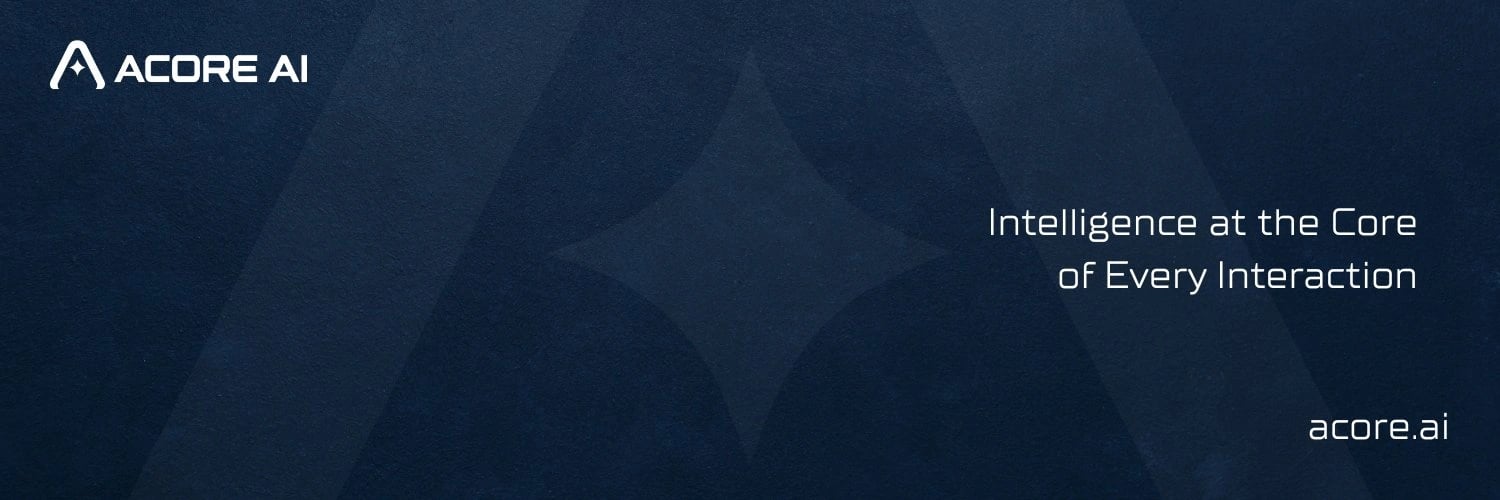Subscribe to wiki
Share wiki
Bookmark
Acore AI
Acore AI
Acore AI is a technology platform that enables the creation, deployment, and management of interactive 3D virtual agents. The project focuses on developing photorealistic digital humans capable of natural conversation, emotional expression, and contextual understanding for enterprise applications. [1]

Overview
Acore AI is positioned as an enterprise-grade platform designed to advance human-computer interaction. The core of the platform involves combining artificial intelligence with detailed 3D avatars that can engage in conversations and display human-like reactions. The system is built to support deployment across multiple channels, allowing organizations to maintain a consistent and intelligent virtual presence. The project's stated mission is to provide sophisticated virtual agents that can be integrated into various industries to enhance customer experiences and digital engagement. [1] [2]
Key Features
- 3D Virtual Agent Technology Acore AI features a real-time rendering engine with advanced lighting, facial animation supporting over 200 expressions, natural eye and gaze tracking, and multilingual lip synchronization. It also incorporates gesture recognition and body language interpretation to enhance realism.
- Artificial Intelligence Core The platform integrates large language models with contextual memory, multimodal understanding, and emotion recognition. Personalization algorithms adapt responses to individual users, enabling more natural and adaptive conversations.
- Speech and Language Processing Capabilities include high-quality text-to-speech with natural intonation, accurate voice recognition with accent and dialect support, and multilingual communication in more than 40 languages. The system also maintains context over extended interactions and interprets user intent.
- Emotional Intelligence Agents can detect emotional states in speech and text, provide empathetic and mood-adjusted responses, and retain emotional context across conversations to support continuity and engagement.
- Platform Architecture Acore AI is built on a scalable cloud infrastructure with multi-region deployment, auto-scaling, load balancing, and global content delivery. Real-time monitoring ensures consistent performance for enterprise applications.
- Security and Compliance The system employs end-to-end encryption, is compliant with GDPR and CCPA, and operates on SOC 2 Type II certified infrastructure. Regular security audits and configurable data residency options strengthen trust and regulatory alignment.
- Development and Management Tools The Agent Studio provides a drag-and-drop interface for building and customizing agents, conversation flows, and knowledge integration. The Analytics Dashboard delivers insights into user engagement, performance metrics, and supports testing and optimization through A/B frameworks. [6]
Bittensor Integration
A significant component of Acore AI's technical strategy is its integration with the Bittensor network. Bittensor is a decentralized machine learning network that allows different AI models to collaborate and learn from each other in a peer-to-peer system. By integrating with a Bittensor subnet, Acore AI aims to leverage a decentralized pool of AI capabilities, enhancing the intelligence and adaptability of its virtual agents. This integration is intended to move beyond reliance on centralized AI models and tap into a broader, collaboratively improved intelligence network. [3] [2]
Use Cases
- Advanced Customer Service: Deploying virtual agents that can handle complex customer inquiries with empathy and contextual understanding, providing 24/7 support.
- Virtual Brand Ambassadors: Creating realistic digital representatives for brands to interact with customers on websites, in virtual events, or within metaverse environments.
- Interactive Training and Education: Using virtual agents as tutors or trainers that can adapt their teaching style based on the user's engagement and understanding.
- Healthcare and Wellness: Developing virtual assistants that can provide information, companionship, or guidance in a supportive and interactive manner.
- Retail and E-commerce: Implementing virtual shopping assistants that can offer personalized product recommendations and guide users through their purchasing journey. [5]
Tokenomics
Acore AI’s native token, $ACORE, is issued on the Ethereum blockchain with a fixed total supply of 100,000,000 tokens. The project has implemented a one-year liquidity lock to support market stability. [4]
Token Utility
The $ACORE token serves as the primary medium of exchange within the Acore AI ecosystem. Its utility is central to the platform's operation, enabling users to access services, pay for transaction fees, and participate in the governance of the platform. The economic model includes a system for tax revenue allocation, which is designed to support the long-term sustainability and development of the project. Security measures, such as locked liquidity and smart contracts, are also part of the token's economic framework to ensure stability. [2] [4]
See something wrong?
